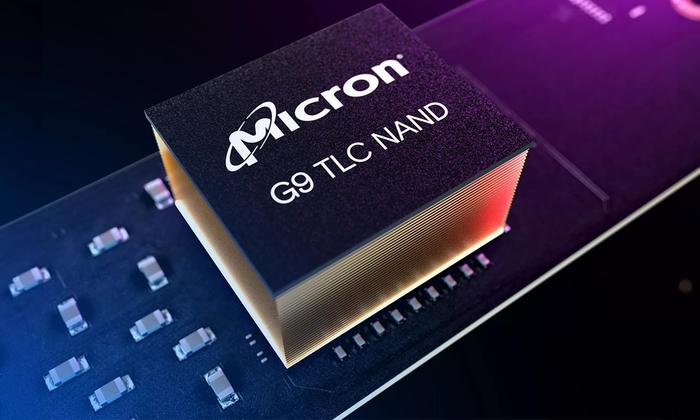Micron's 9th Generation 3D TLC NAND Flash: The Next chapter in the SSD market
In the data-driven era, advances in storage technology continue to push the boundaries of computing power. Micron's latest breakthrough, the mass production of the 9th generation 3D TLC NAND flash memory, heralds a revolutionary performance leap in the solid-state drive (SSD) market.
Double leap in energy efficiency and performance
Micron's G9 NAND technology is 50 percent ahead of existing competitors on the market with its stunning 3.6GB/s data transfer rate, or 3600MT/s flash interface rate. This significant increase in speed means that in data-intensive application scenarios, such as artificial intelligence (AI) and data centers, faster data access speeds and higher processing efficiency will be possible.
The Micron G9 NAND also significantly outperforms other solutions on the market in terms of write bandwidth and read bandwidth, by 99 percent and 88 percent, respectively. This will bring both performance and energy efficiency benefits to SSDS, meeting the market demand for more efficient and environmentally friendly storage solutions.

Compact size design
With a compact package size of 11.5mm x 13.5mm, Micron G9 NAND technology excels in space savings, saving 28 percent more space than comparable products. This development provides device manufacturers with greater design flexibility, enabling smaller, more efficient storage devices.
Market impact
Micron's 2650 NVMe SSD, integrated with G9 TLC NAND technology, demonstrated outstanding results in the PCMark 10 benchmark. Sequential read rate up to 7,000 MB/s, continuous read performance up to 70%, continuous write performance up to 103%. These significant performance improvements are expected to change the existing landscape of the SSD market and drive the market transition to higher performance storage solutions.
Future outlook
With the mass production of Micron G9 NAND technology, the SSD market will usher in new development opportunities. Although the initial production cost may be higher, it is expected that the cost will gradually decrease as the technology matures and economies of scale are realized. This will not only drive the adoption of SSDS in a wider range of areas, but could also have a profound impact on market prices and cost structures.
This innovation of Micron Technology will undoubtedly inject new vitality into the solid-state drive market and open a new chapter in the development of storage technology. As technology continues to advance and applications continue to expand, we have reason to believe that the computing world of the future will be faster, more efficient and smarter.
Intergrated Circuit of Computer Solutions
● The LPC4320FBD144 is an ARM Cortex-M4-based 32-bit microcontroller from NXP Semiconductors with an embedded ARM Cortex-M0 coprocessor for embedded systems requiring signal processing. The microcontroller is known for its operating frequency of up to 204MHz and 200kB of internal RAM, which provides efficient data processing power.
● The MPC8308VMAGDA is a highly integrated PowerQUICC® II Pro processor manufactured by NXP USA Inc., designed for low cost and power consumption in a variety of networking applications. The processor is based on the PowerPC e300c3 core, runs at up to 400MHz and provides 32-bit processing power. It also has a 16 KB instruction cache and 16 KB data cache, and is equipped with a DDR2 storage controller that supports a data transfer rate of 266 MHz.
● The LAA110 is a solid-state relay (SSR) from the IXYS Integrated Circuits Division with 8 pins in a package form of 8-DIP. The LAA110's circuits are designed in single-pole single-throw (SPST-NO) form and each unit provides a maximum output current of 120mA for both AC (AC) and DC (DC) loads. Its output voltage is up to 350V, and it has a 35Ω resistance and a PC pin termination style. The product operates at temperatures ranging from -40°C to 85°C, with a maximum power dissipation of 800mW. Suitable for applications that require frequent switching or use in environments with vibration and shock.
Website: www.conevoelec.com
Email: info@conevoelec.com







